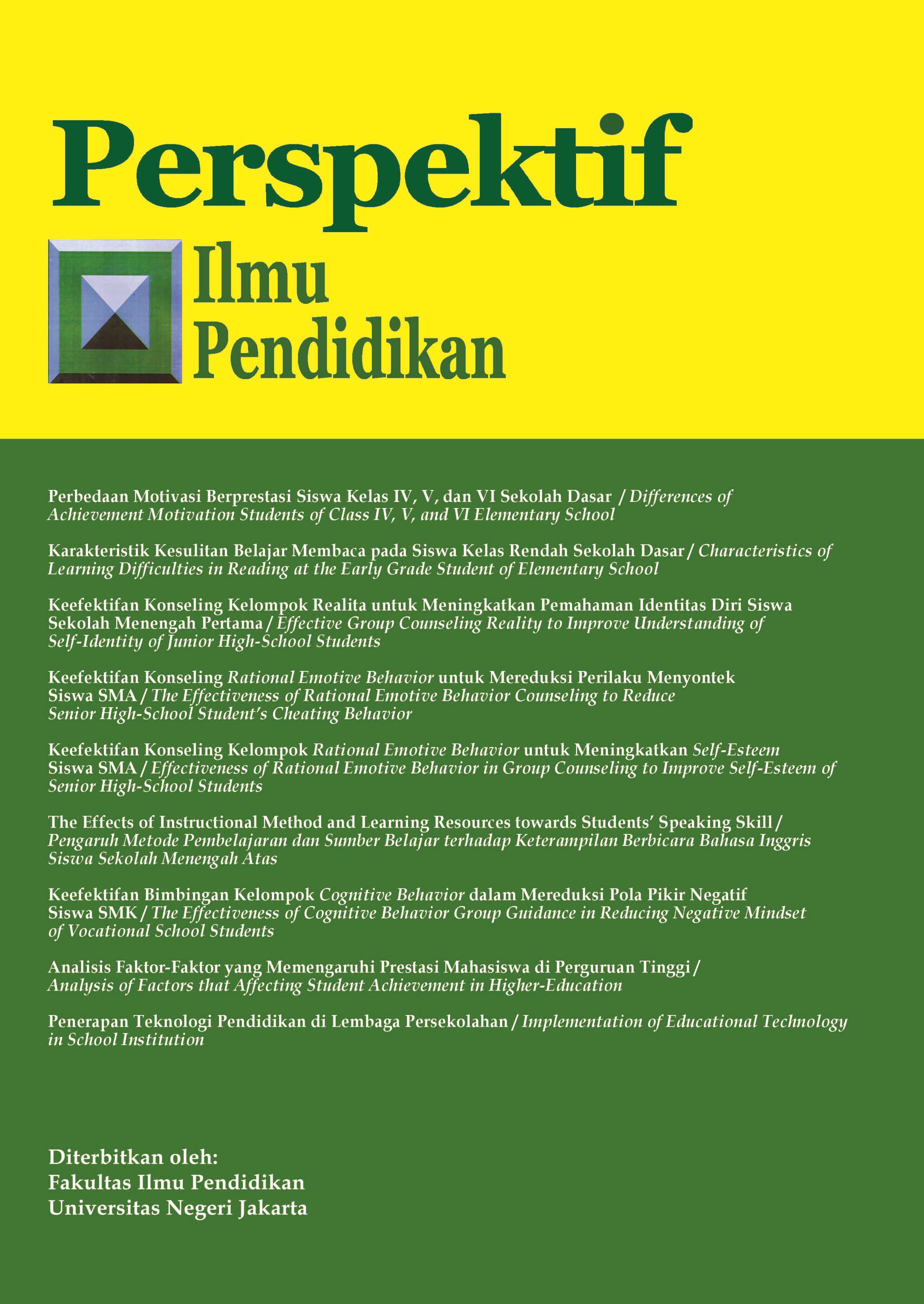THE EFFECTS OF INSTRUCTIONAL METHOD AND LEARNING RESOURCES TOWARDS STUDENTS’ SPEAKING SKILL
DOI:
https://doi.org/10.21009/PIP.322.6Keywords:
instructional method, learning resources, speaking skillAbstract
Speaking skill is affected by two factors, the internal and external factors. The two external factors are instructional methods and learning resources. The complete and incomplete learning resources will surely affect the instructional process. As well as with instructional methods, it will affect the achievement of learning objectives. This research is aimed to get the empirical data and to find out the effect of instructional method and learning resources towards students’ speaking skill at state senior high schools in Bekasi. The research was conducted at SMA Negeri 1 and SMA Negeri 2 Sukatani-Bekasi. The total sample of this research is 40 students. The experiment was done from 17 Juli – 02 December in 2017. The technique of collecting data of instructional method and learning resources used questionnaires. Otherwise, the speaking skill was acquired from the test. The result of the research identifies there is the significant effect of instructional method and learning resources towards students speaking skill. Thus, the schools and the government should increasingly work hard in fulfillment of the completeness of learning resources and using an appropriate instructional method for the achievement of learning objectives.
References
Abdullah, M. (2013). Students’ speaking ability through community language learning. ELITE: English and Literature Journal, 1(1), 97-125. http://journal.uin-alauddin.ac.id/index.php/elite/article/view/3353/3167
Brown, H. D. (2004). Language assessment, principle, and classroom practice: Fourth edition. New York: Pearson Education, Inc.
Cameron, L. (2001). Teaching language to young learners. Cambridge: Cambridge University Press.
Chaney, A. L., & Burk, T. L. (1998). Teaching oral communication in grades K-8. Boston: Allyn and Bacon.
Hughes, D. (2007). Public speaking. Jakarta: Gramedia Widiasarana.
Keown, M. P. (1976). Reading a basic guide for parents and teacher. Singapore: Routledgeand Kegan Paul Ltd.
Masbiran, G. & Fauzi, A. (2017). Speaking skill in using community language learning (CLL). IJIELT, 3(2), 198-205. doi: http://dx.doi.org/10.24014/ijielt.v3i2.4844
Muhroji, dkk. (2004). Fasilitas belajar mengajar. Jakarta: Rineka Cipta.
Nurhayati & Mufliharsi, R. (2016). Perencanaan dan pengajaran bahasa Inggris. Jakarta: UNINDRA PRESS.
Nurmalia, E. (2010). Pengaruh fasilitas dan lingkungan belajar terhadap prestasi belajar siswa kelas XI IPS MAN Malang 1. Skripsi tidak diterbitkan. Malang: Universitas Islam Negeri (UIN) Maulana Malik Ibrahim Malang.
Richards J.C., & Rodgers. (1986). Approaches and methods in language teaching. Cambridge: Cambridge University Press.
Sudjana. (1996). Metode statistika. Bandung: Tarsito.
Setiyadi, B. (2006). Teaching english as foreign language. Yogyakarta: Graha Ilmu.
Downloads
Published
How to Cite
Issue
Section
License
Authors who publish with this Journal agree to the following terms:
- Author retain copyright and grant the journal right of first publication with the work simultaneously licensed under a creative commons attribution licensethat allow others to share the work within an acknowledgement of the work’s authorship and initial publication of this journal.
- Authors are able to enter into separate, additional contractual arrangementfor the non-exclusive distribution of the journal’s published version of the work (e.g. acknowledgement of its initial publication in this journal).
- Authors are permitted and encouraged to post their work online(e.g. in institutional repositories or on their websites) prior to and during the submission process, as it can lead to productive exchanges, as well as earlier and greater citation of published works.
-
Users/public use of this website will be licensed to CC BY-NC-SA Creative Commons Attribution-NonCommercial-ShareAlike 4.0 International License












